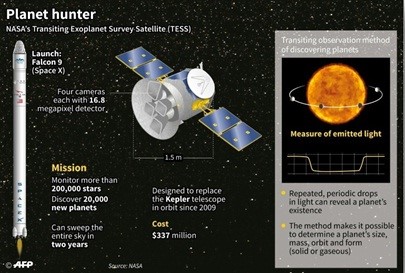NASA’s TESS Discovers Distant Warm Jupiter Exoplanet
Why in the News ?
NASA’s TESS has discovered a “warm Jupiter” exoplanet over 1,000 light-years away using the transit method. This gas giant’s detection highlights TESS’s continued success in exoplanet exploration and deepens understanding of planetary formation and atmospheric characteristics beyond our solar system.
Discovery by TESS:
- NASA’s Transiting Exoplanet Survey Satellite (TESS), launched in March 2018, has discovered a new “warm Jupiter”
- This gas giant lies over 1,000 light-years from Earth and was identified using the transit method, which tracks dips in a star’s brightness as a planet crosses in front of it.
- TESS continues its mission after completing its two-year primary goal in July 2020, during which it covered about 75% of the sky and confirmed 66 exoplanets.
Features of the Warm Jupiter
- The exoplanet is categorized as a “warm Jupiter” due to its size and moderate distance from its star, making it warmer than the colder gas giants like Jupiter in our solar system.
- Gas giants like this help astronomers study planetary formation and atmospheric properties.
- Their size and proximity to their host stars make them easier to observe and analyze.
Significance for Space Research
- TESS is capable of detecting a wide range of planets—from small, rocky Earth-like ones to large gas giants—enhancing our understanding of planetary systems.
- Each discovery adds vital information to the search for habitable worlds beyond Earth.
- The mission builds upon the legacy of the Kepler Space Telescope and reinforces the importance of space-based observatories in exoplanet exploration.
About NASA’s TESS mission:● Launched by NASA in March 2018 as a follow-up to the Kepler mission. ● Designed to discover thousands of exoplanets around the brightest dwarf stars. ● Uses the transit method—detecting periodic dips in a star’s brightness. ● This method helps determine a planet’s size and orbital distance. ● Searches for orbits in the habitable zone, where liquid water may exist. ● Primary mission ended in July 2020 after surveying 75% of the sky. ● Discovered 66 confirmed exoplanets during its prime mission. ● Currently operating under an extended mission. ● Detects a wide range—from rocky worlds to gas giants. |




